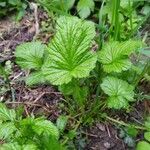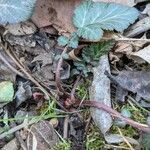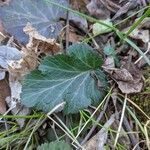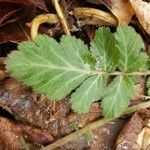Plants leafy-stemmed. Stems 25–110 cm, puberulent and hirsute to densely hirsute, ?some hairs 2–2.5 mm?. Leaves: basal 12–25 cm, blade simple or pinnate, major leaflets 3–5, plus 0–4 minor basal ones, terminal leaflet slightly larger than major laterals; cauline 4–15(–23) cm, stipules ± free, 11–48 × 6–35 mm, blade 3-foliolate or simple and 3-lobed to unlobed. Inflorescences 3–14-flowered. Pedicels puberulent, ?sometimes with scattered hairs?, eglandular. Flowers erect; epicalyx bractlets 1–1.5 mm; hypanthium green; sepals spreading but soon reflexed, 3–6 mm; petals spreading, cream, oblong to elliptic, (1.5–)2–3.5 mm, shorter than sepals, apex rounded. Fruiting tori sessile, densely bristly, ?hairs 1–2.3 mm?. Fruiting styles geniculate-jointed, proximal segment persistent, (3–)4.5–7 mm, apex hooked, glabrate, distal segment deciduous, 1–2 mm, pilose in basal 1/2, ?hairs much longer than diam. of style?.
More
Much like no. 2 [Geum canadense Jacq.]; lvs larger and more coarsely toothed, the terminal lfl usually much larger than the lateral ones, often deeply incised; stem hirsute below; pet ochroleucous, 2–3 mm, half or two-thirds as long as the sep; 2n=42. Moist upland woods; Mass. and N.Y. to Ind., s. to N.C. and Tenn. June, July. (G. flavum)




